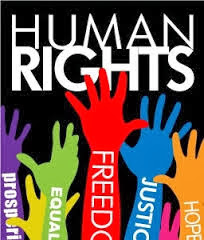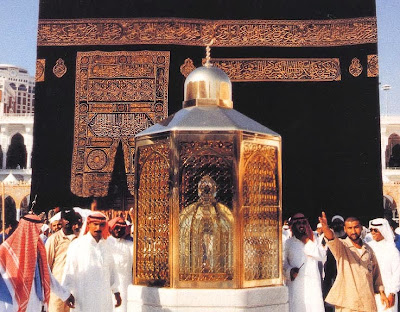In a week that has seen women in Saudi Arabia -- the only country in the world where women cannot drive -- continue their fight to break the taboo, the World Economic Forum (WEF) has published its annual Global Gender Gap Index.
So where is the best
country to be a women? Iceland, for the fifth year running, has the world’s
smallest gender gap.
The 397-page Index was
introduced in 2006 as a framework for capturing the magnitude and scope of
gender-based disparities and tracking their progress.
It benchmarks national gender
gaps on economic, political, education and health criteria. It provides country
rankings that allow for effective comparisons across regions and income groups and
over time.
The rankings are designed to build
among a global audience greater awareness of the challenges posed by gender
gaps and the opportunities created by reducing them.
Iceland’s ranking
means it is where women enjoy the most equivalent access to education and
healthcare and where they are most likely to be able to participate fully in
the country's political and economic life.
Iceland is joined
at the top of the The Global Gender Gap Report, 2013 by
its Nordic neighbors Finland, Norway and Sweden.
Overall, the gender
gap narrowed slightly across the globe in 2013, as 86 of 133 countries showed
improvements.
However,
"change is definitely slow," says Saadia Zahidi, one of the report's
authors.
 |
| From BBC News Online |
The Philippines, at
fifth, is the highest-ranking Asian nation and Nicaragua is the highest-placed
country from the Americas, at 10th.
The G20 group of
leading industrial nations has no representative in the top 10, nor does the
Middle East or Africa.
Middle East and North Africa
The Middle East and
North Africa (MENA) is where some of the greatest gender inequalities exist,
the report says.
But the picture is
far from uniform.
For instance, the
Gulf states have tended to invest heavily in female education, with a reverse
gender gap taking place in the United Arab Emirates. Many more women than men
are now finishing university here. This contrasts with countries like Yemen,
where levels of female education are very low.
MENA closed 59% of its overall gender gap in 2013. Compared to
2006, the region shows a very slight improvement, despite the fact that the
Middle East region witnessed a fall in its overall score compared to last year.
The region ranks the lowest on the Economic Participation and
Opportunity and Political Empowerment sub-indexes with, respectively, only 39%
and 7% of the gender gap being closed.
 |
| From BBC News Online |
The highest-ranking economies of the region have made vast
investments in increasing women’s education levels in the last decades.
In Qatar, Bahrain, Kuwait, Algeria, Oman, Israel, Jordan, Lebanon
and Saudi Arabia, the tertiary education enrolment rates for women are higher than
those of men. However, these countries have had varying degrees of success at
integrating women into the economy and in decision-making in order to reap the
benefits of this investment. Six out of the 10 high-income countries that rank
the lowest on the overall Index are from the region.
The UAE (109) continues to hold the top position among the Arab
countries and is the only country from the region that has fully closed the
educational attainment gap.
However, it falls two places in the overall ranking this year
because of a decrease on the Wage equality for similar work and in the Estimated
earned income indicators.
 |
| From the Global Gender Gap Index report |
The UAE is
followed by Bahrain (112), Qatar (115), Kuwait (116) and Jordan (119).
Qatar
maintains the same overall ranking as last year although there has been a small
improvement in the overall score. Qatar ranks the highest of the region on the Estimated
earned income indicator but the lowest of the region on the Healthy life
expectancy indicator.
Kuwait falls
seven spots this year because of losses in the Labor force participation, Wage
equality for similar work and Estimated earned income indicators.
Jordan moves
up two places. Its improvements are driven by gains in the Educational
Attainment and Political Empowerment sub-indexes.
Next are Oman
(122), Lebanon (123) and Algeria (124).
Oman ascends
three places relative to its 125th position in the 2012 ranking thanks to gains
on the Economic Participation and Opportunity and Educational Attainment sub-indexes.
Oman obtains the best score from the region on the Wage equality for similar work
indicator.
 |
| From the Global Gender Gap Index report |
Women’s Education
Some countries
that have made the key investments in women’s education but have generally not
removed barriers to women’s participation in the workforce and are thus not
seeing returns on their investments in the development of one half of their
human capital.
This group
includes Japan, the UAE and Brazil. They have an untapped but educated talent
pool and would have much to gain through women’s greater participation in the
workforce.
A report by
the UN Economic and Social Commission for Asia and the Pacific Countries found
that restricting job opportunities for women is costing the region between $42
and $46 billion a year.
Research by
the World Bank demonstrates that similar restrictions have also imposed massive
costs throughout the Middle East, where decades of substantial investment have
dramatically reduced the gender gap in education but the gender gap in economic
opportunity remains the widest in the world.
Gender equality vs. women’s empowerment
The third
distinguishing feature of the Global Gender Gap Index is that it ranks
countries according to their proximity to gender equality rather than to
women’s empowerment.
Its focus is on
whether the gap between women and men in the chosen indicators has declined,
rather than whether women are “winning” the “battle of the sexes.”
Hence, the
Index rewards countries that reach the point where outcomes for women equal
those for men, but it neither rewards nor penalizes cases in which women are
outperforming men in particular indicators.
So, are we
all moving to Iceland? Probably not just yet…






















